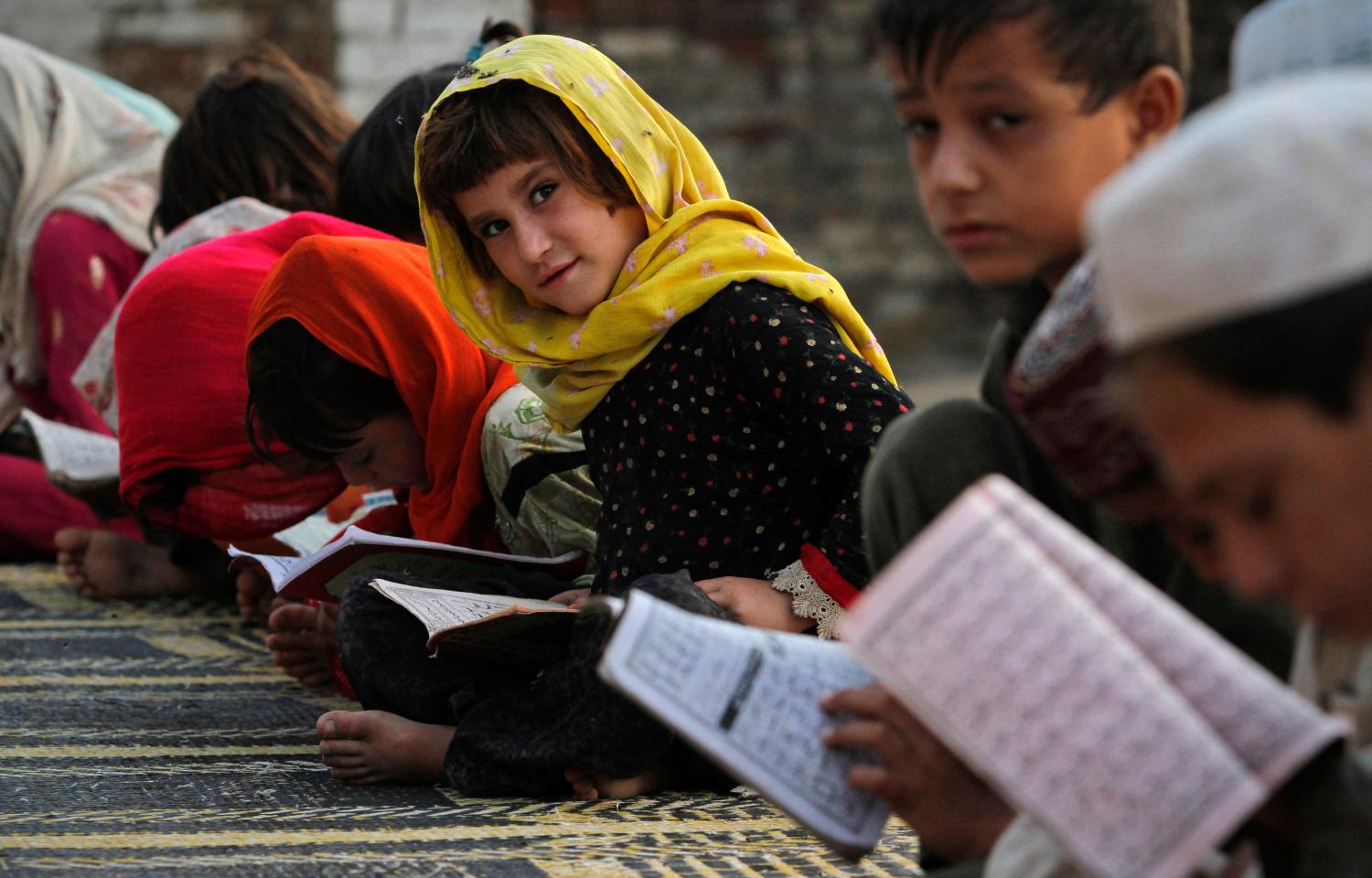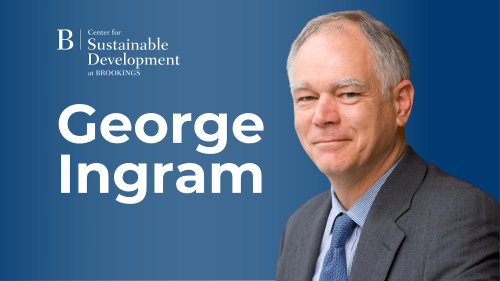Editor’s Note: For Campaign 2012, Benjamin Wittes and Daniel Byman wrote a policy brief proposing ideas for the next president on America’s counterterrorism efforts. The following paper is a response to Wittes and Byman’s piece from Rebecca Winthrop and Kevin Watkins. Stephen Grand also prepared a response arguing that the next president must seize the Arab Spring as a historic opportunity to prove to the region that the United States is a meaningful and trustworthy partner.
Our concern with the points Benjamin Wittes and Daniel Byman make is less about what is said than about what is omitted. The authors tout the great success of counterinsurgency strikes, while turning a blind eye to the very real human costs—namely civilian casualties from “targeting errors”—associated with the use of drones. These errors not only result in the loss of life but also breed animosity toward the United States among the civilian population. Unfortunately, Wittes and Byman view counterterrorism through a very narrow prism that leads them to focus almost entirely on traditional security themes, such as preemptive strikes, the targeting of leaders, and emergency legal powers. They fail to consider the wider forces fueling international terrorism. Extreme poverty, youth unemployment, and limited opportunities for education plague countries such as Pakistan, Yemen, and Somalia—and even more those that have homegrown terrorist groups with embryonic links to al Qaeda, such as Nigeria and Mali. Of course, there is no simple correlation between poverty and terrorism. But it is perilous to ignore the interaction that does exist.
It is well to recall that the 9/11 Commission report recognized the need to put development at the center of the counterterrorism agenda. The report therefore recommended that the U.S. government “offer an agenda of opportunity that includes support for public education.” Recent detailed reviews of the relationship between U.S. national security, weak states, and global poverty clearly demonstrate numerous ways in which poor governance and extreme poverty, particularly when interacting with specific political and cultural phenomena, can create favorable conditions for terrorist networks to flourish in. As President Obama observed in a 2010 speech, “Extremely poor societies . . . provide optimal breeding grounds for disease, terrorism and conflict.”
True, most high-profile terrorist leaders associated with al Qaeda are middle-class and well-educated individuals. The would-be Times Square bomber, Faisal Shahad, boasts of having an MBA. Yet the sense of hopelessness, despair, and thwarted ambition that comes with poor governance, mass poverty, and youth unemployment creates a political environment conducive to the rise of terrorist groups. Weak states—particularly those with some level of functioning government, resources, and connections to the outside world—provide safe havens from which violent extremists can smuggle and procure needed goods and services, raise and manage funds, and build networks. Limited economic opportunities and education often lead the general population to support or passively accept extremists in their midst, thus making it that much easier for them to carry on their work. It is easy to forget that for every highly skilled and politically motivated leader or successful suicide bomber, there are many others that make terrorist networks function: drivers, messengers, housekeepers, and lookouts. These people are often more easily recruited than the bombers because of their limited chances in life. Investing in their well-being, through economic assistance and support for strengthening government capacity, is an important strategy for sustainably reducing violent extremism.
Yemen is a classic example of the shortcomings of focusing counterterrorism efforts solely on exercises such as intercepting terror leaders and bombers. After the 2000 attack on the USS Cole, initial efforts by the United States entailed what Wittes and Byman would describe as a highly effective antiterrorism operation. Leaders were captured, networks weakened, and terror plots were stymied. Nevertheless, Yemen is again at the forefront of global terrorism. Poverty, mass unemployment, and some of the world’s worst education indicators, coupled with a sense of frustration over Western support for a regime seen as corrupt, antidemocratic, and ineffective, make Yemen a highly conducive environment for violent extremists hostile to the United States.
Or consider the case of Pakistan. This is one of the world’s youngest countries. Half of its 178 million people are under the age of seventeen. Its public education system might politely be described as underperforming. Over one-third of children of primary school age are not in school. Only a minority make it to secondary school, where enrolment rates are just 49 percent for boys and 37 percent for girls. To make matters worse, the likelihood of unemployment rises with the level of education because of the weak link between the skills young people acquire in school and the skills demanded in labor markets. It is difficult to counter terrorism effectively in the absence of a strategy that gives the country’s youth hope of a better future.
The same logic holds in Somalia. Here the ongoing conflict has virtually destroyed the public education system, making it impossible for young people to get a decent education. The United Nations Children’s Fund (UNICEF) estimates that from 2005 to 2009 only about a quarter of Somalia’s school-aged children attended primary school, and only about 9 percent of boys and 5 percent of females attended secondary school. Hundreds of thousands of Somali children are now living in refugee camps in neighboring Kenya. Very little provision has been made for the education of this surging refugee population. Meanwhile, mothers in Dadaab, the largest refugee camp, are openly concerned about their children being targeted for recruitment by al Shabab.
To reiterate, the next administration needs to put poverty, including strategies for positive youth development, at the center of the wider national security agenda. This does not mean dispensing with the very important moral and economic rationales that motivate humanitarian and development aid to a wide range of countries, including those that currently have a limited connection with terrorism. But it does mean that development assistance must be deployed in a way that helps mitigate the underlying causes that give rise to violent extremism.
The Obama administration, through such endeavors as the National Security Strategy and the Quadrennial Diplomacy and Development Review, has offered a vision of national security that connects the dots between defense and development and presses for “conflict-sensitive” aid strategies. Against this backdrop, the next U.S. president should play a global leadership role in advancing the global agenda not just for getting all children into school, but also for raising learning achievement levels and strengthening the linkages between education and employment. The Obama administration has fallen short on its leadership in the education sector. Quality education and training programs that build skills relevant to labor markets and to coexisting in a globalized world are essential to engage youth constructively. In particular, such programs should strengthen both the U.S. and international aid systems for delivering education of a decent quality to children and youth in countries affected by violent conflict. That means working both internally and with partners to increase the share of humanitarian aid directed to education (currently less than 2 percent of the total), while at the same time delivering increased and more effective aid to refugees, internally displaced people, and countries embarking on postconflict reconstruction. To this end, it will be necessary to work with Congress to maintain sufficient resources for foreign assistance in this age of austerity. Reforms will also be needed to make foreign aid more effective and cost-efficient, for example, by consolidating and streamlining America’s development system and ensuring that all foreign assistance programs employ conflict-sensitive approaches.
The Brookings Institution is committed to quality, independence, and impact.
We are supported by a diverse array of funders. In line with our values and policies, each Brookings publication represents the sole views of its author(s).





